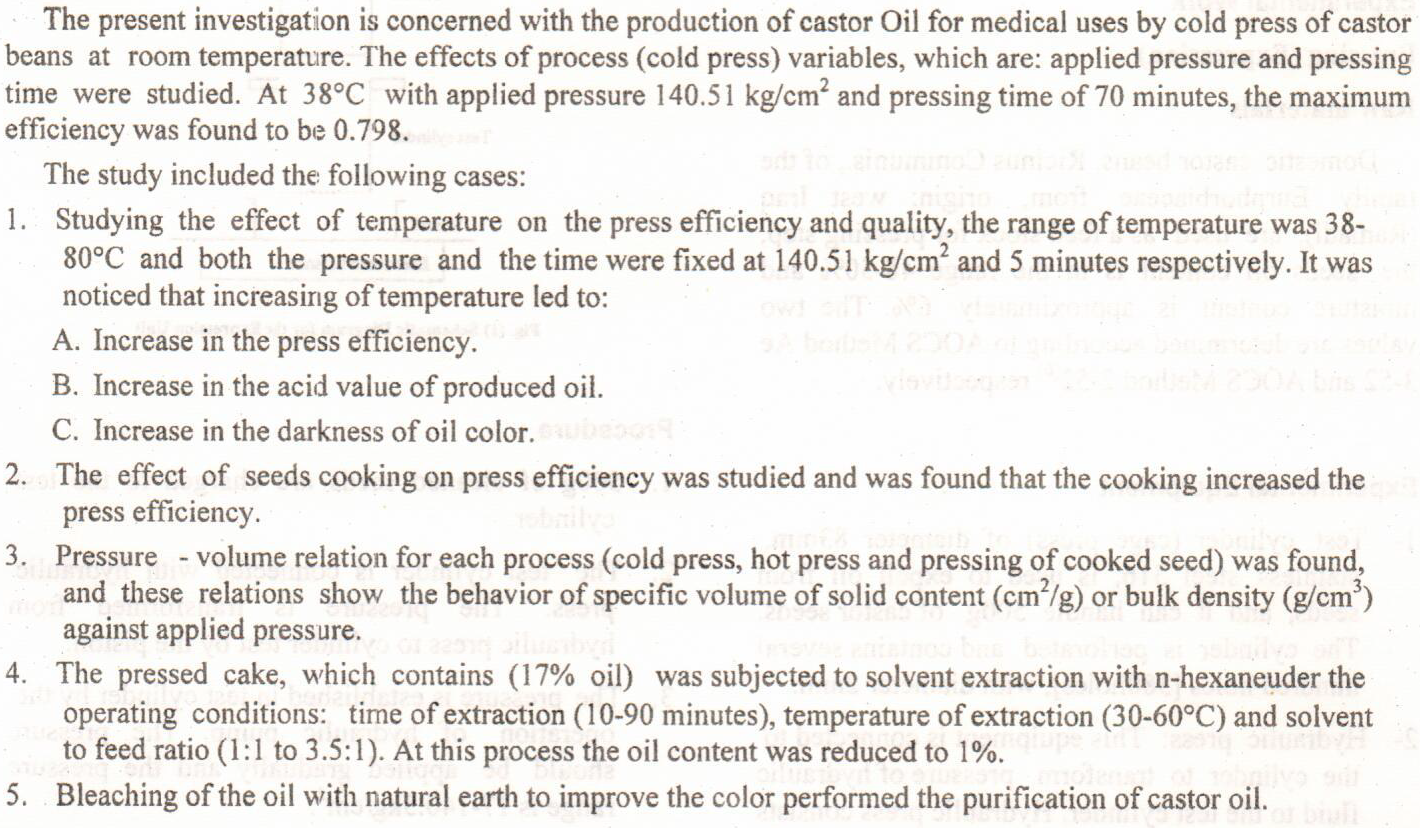
 (4)
(4)
IMPLICATION OF GEOMECHANICAL EVALUATION ON TIGHT RESERVOIR DEVELOPMENT / SADI RESERVOIR HALFAYA OIL FIELD
Diesel engine oil was subjected to thermal oxidization (TO) for six periods of time (0 h, 24 h, 48 h, 72 h, 96 h, and 120 h) and was subsequently characterized by terahertz time domain spectroscopy (THz-TDS). The THz refractive index generally increased with oxidation time. The measurement method illustrated the potential of THz-TDS when a fixed setup with a single cuvette is used. A future miniaturized setup installed in an engine would be an example of a fixed setup. For the refractive index, there were highly significant differences among the oxidation times across most of the 0.3–1.7 THz range.
 (10)
(10)
 (9)
(9)
The Gas Assisted Gravity Drainage (GAGD) process has become one of the most important processes to enhance oil recovery in both secondary and tertiary recovery stages and through immiscible and miscible modes. Its advantages came from the ability to provide gravity-stable oil displacement for improving oil recovery, when compared with conventional gas injection methods such as Continuous Gas Injection (CGI) and Water – Alternative Gas (WAG). Vertical injectors for CO2 gas were placed at the top of the reservoir to form a gas cap which drives the oil towards the horizontal oil producing wells which are located above the oil-water-contact. The GAGD process was developed and tested in vertical wells to increase oil r
... Show More (6)
(6)
Results of the current study demonstratedthat out of eighty-three isolatesof Pseudomonas aeruginosa,only twenty-five isolateswere resistant to five different antibiotics (of different classes) that were consequentlyconsideredmultidrug resistant isolates.These isolates developed variable susceptibility toward Eucalyptuscamaldulensisleavesoil (ECO). GC-MS analysis of ECOrevealed that the aromatic oil eugenol is the major constituent.However, the most frequent MIC was 0.39 µg/ml, while the lowest frequent MIC was 3.125 µg/ml.Moreover, this oil at ½ MIC (0.195µg/ml) increased the gene expression of exoU. Itis concluded from the outcomes of the studythat ECOmay cause severe damagewhen used to treat infections caused by P. aeruginosa.
... Show More (1)
(1)
The Mishrif reservoir (Cenomanian - Turonian) in the Z, H, B and N oilfields in southern Iraq was investigated to clarify how nickel, vanadium, asphaltene, NSO and sulfur content affect the crude oil quality. The GC-Mass and ICP-MS analyses were used to provide fruitful hydrocarbon results. Classification of crude oil based on API gravity broadly indicates the oil's density and general properties. Typically, lighter crude oils are easier to refine, yield higher percentages of valuable products such as gasoline and diesel, and have a higher market value. Heavier crude oils require more processing and may yield more residual products, such as heavy fuel oil and asphalt. The Mishrif crude oil was classified as a medium sour crude oil c
... Show More (9)
(9)
The petroleum sector has a significant influence on the development of multiphase detection sensor techniques; to separate the crude oil from water, the crude oil tank is used. In this paper, a measuring system using a simple and low cost two parallel plate capacitance sensor is designed and implemented based on a Micro controlled embedded system plus PC to automatically identify the (gas/oil) and (oil/water) dynamic multi-interface in the crude oil tank. The Permittivity differences of two-phase liquids are used to determine the interface of them by measuring the relative changes of the sensor’s capacitance when passes through the liquid’s interface. The experiment results to determine the liquid’s interface is sa
... Show MoreSadi formation is one of the main productive formations in some of Iraqi oil fields. This formation is characterized by its low permeability values leading to low production rates that could be obtained by the natural flow.
Thus, Sadi formation in Halfaya oil field has been selected to study the success of both of "Acid fracturing" and "Hydraulic fracturing" treatments to increase the production rate in this reservoir.
In acid fracturing, four different scenarios have been selected to verify the effect of the injected fluid acid type, concentration and their effect on the damage severity along the entire reservoir.
The reservoir damage severity has been taken as "Shallow–Medium– Sever
... Show MoreFor the most reliable and reproducible results for calibration or general testing purposes of two immiscible liquids, such as water in engine oil, good emulsification is vital. This study explores the impact of emulsion quality on the Fourier transform infrared (FT-IR) spectroscopy calibration standards for measuring water contamination in used or in-service engine oil, in an attempt to strengthen the specific guidelines of ASTM International standards for sample preparation. By using different emulsification techniques and readily available laboratory equipment, this work is an attempt to establish the ideal sample preparation technique for reliability, repeatability, and reproducibility for FT-IR analysis while still considering t
... Show More (12)
(12)
 (10)
(10)
|
Background: Essential oils extracted from plants have been widely used in antimicrobial activity, particularly the Callistemon viminalis, with a high number of essential oils extracted. Objectives: To identify the chemical composition of essential oil derived from Callistemon viminalis and evaluates its antimicrobial activity against selected bacterial and fungal strains. Subjects and methods: During the study, the antimicrobial activity of different selected essential oils on some bacteria (Escherichia coli, Pseudomonas aeruginosa, Salmonella enteritidis, Staphylococcus aureus, and Streptococcus pneumonia) and fungus (Candida albicans) was evalua |
 (1)
(1)
 (1)
(1)
